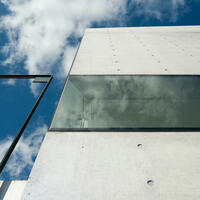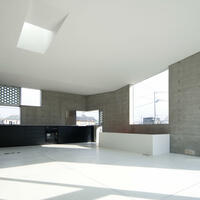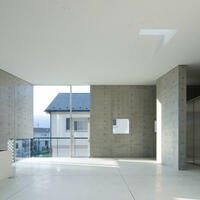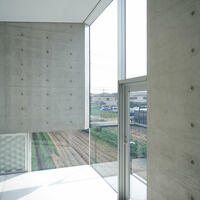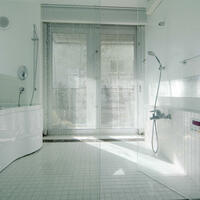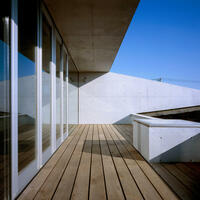UNABO
Unane, Setagaya, Tokyo, JAPAN
Clad in Architecure
| Architect | Furuya Nobuaki+NASCA |
|---|---|
| Usage | House |
| Structure | RC+S |
| Size | 2F/1BF |
| Site area | 150.46㎡ |
| Area | 133.96㎡ |
| Completion | 2005.06 |
| Publishing | Jutakutokushu 2006.03; GA HOUSE 91 |
A man’s frame is covered by skin, and then by clothes. I would like to claim that it is also covered by architecture. Then, architecture itself is surrounded by the ‘outside world,’ such as the neighboring landscape, and townscape or cityscape. In other words, the ‘outside world’ deeply affects the inner space of the architecture. When people look for a residence, they tend to regard geographical conditions as significant. It is because they take the above-mentioned theory into account. If the area is not safe, it is necessary for them to have a house built like ‘armour’. On the other hand, if the area is very safe, it is enough to have a ‘yukata’-like house. Then, if surrounding landscapes change so drastically and unexpectedly, how should architecture, as the ‘human’s third skin’, adapt?
This house is located in the suburbs of a big city, where many building lots are on sale. When I visited the lot for the first time, there were many fields around it. However, lots of ready-made houses had started to pop up by the time the house was completed. I thought the house needed a ‘coat’ in order not to be overwhelmed by the alterations carried out in the neighborhood. Nevertheless, it is not rational to build a wall all over the house, nor possible to make only one opening toward the sky. The best solution I found was to build a house like a ‘box with spots’. What I mean by this, is that the house gradually opens up spaciously as the eye regards it from bottom to top. Although the house looks frank and open, it also focuses on its own inside.
In order to restrict the outside view, in this house the residents have to change their vantage point or the height of their viewpoint, instead of adjusting the windows’ degree of transparency. The basement totally shuts out connection to the outside world, except via three staircases that lead to the entrance, the garage and the yard. On the first floor, the heights of the windows are different. The highest floor opens toward the sky. Thus, each floor in this house offers various kinds of comfort to the residents. The windows on the first floor, which was designed to be the living room, fulfill their various roles, such as providing light, landscape views, ventilating the place, and refreshing the air. Besides, they are placed in careful consideration of how they relate to each other and to the outside world. On the other hand, the walls play the part of screens, which separate the inside from the outside world.
As the construction budget was somewhat limited, the owners made only 2 requests: the unchangeable parts or facilities of the house, such as the vertical section from the basement to the attic and the height and area of the interior, and the floor heating which has to be covered up with a white mortar floor, were to be considered the main priority. As for interior decoration, they wanted to plan that by themselves. For the time being, the first floor would be the main space for the couple to spend their days and nights. It is large enough for two people. Little by little, they would make their living space more comfortable. What kind of ‘clothes’ they put on the inside and the outside of the house is up to them.
Photos: Asakawa Satoshi

























